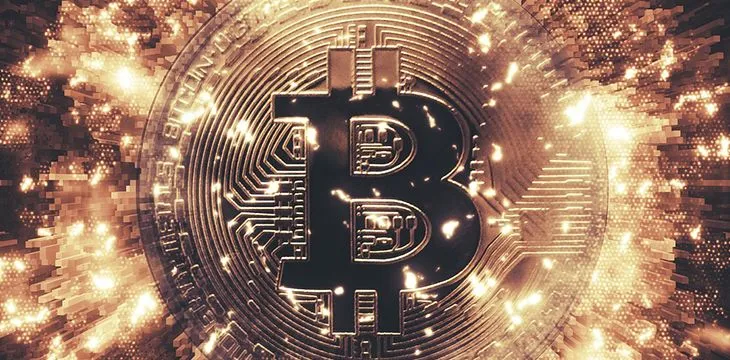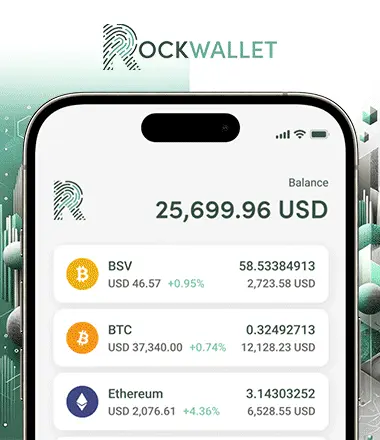Hundreds of online publications describe Bitcoin in great detail, but most still miss the mark. On October 31st, 2008, the whitepaper Bitcoin: A Peer-to-Peer Electronic Cash System was released. Its purpose is to explain the decentralized electronic payment system based on economics.
The word “Bitcoin” is only used twice in the original whitepaper (in the title and a link to a web domain) and goes on to describe a system for electronic transactions without relying on trust. Fixed protocols that utilize an immutable blockchain govern the system.
The system’s medium of exchange is a digital coin. In essence, Bitcoin is a triadic term that comprises fixed protocols, a digital coin, and a decentralized blockchain, forming an Electronic Cash System that works as a Peer-to-Peer Exchange.
To put it simply, Bitcoin’s open-sourced code is reviewable and useable by anyone.
Why is Bitcoin revolutionary?
While online anarchists will have readers believe that Bitcoin will overthrow fiat currency and more reasonable people believe Bitcoin is a censorship-resistant, anonymous digital currency free from seizure, both are incorrect.
Bitcoin is not anonymous; it is private and has an open, immutable ledger. It allows privacy as only the address is public, which means that activity on the address is examinable to discourage illegal activity.
Bitcoin’s real genius is more in its economical design than in any technical innovation. Decentralization happens through the fixed protocol. Bitcoin creates a cash system where participants do not have to rely on an intermediary (such as a bank or payment processor) to facilitate transactions.
The protocols were also designed to prevent the “double-spending” of a coin. Each coin unit is unique and cannot be replicated or destroyed. The system runs on top of a distributed immutable network maintained by thousands of incentivized miners across the globe.
What is Bitcoin to the mainstream audience?
Colloquially speaking, a Bitcoin refers to a unit of the Bitcoin digital currency, also known as a cryptocurrency. Some also incorrectly use the term Bitcoin synonymously when referring to blockchain technology in general.
Unlike traditional fiat currency, no local government or central bank controls Bitcoin. To manage inflation, the gradually minted supply of Bitcoin is capped, meaning that only 21 million coins will ever exist.
The mainstream audience has yet to adopt or understand the full capabilities of Bitcoin.
Bitcoin is so much more than a digital currency for global payments. It is also an immutable, global public data ledger that enterprises can use to power blockchain applications that transform their businesses in new and exciting ways.
Why is Bitcoin a Viable Medium of Exchange?
The underlying blockchain technology is designed to preserve the integrity of data and transactions. The blockchain permanently records confirmed transactions through a process known as mining. Every transaction is digitally signed and authenticated through cryptographic techniques that ensure the funds cannot be spent more than once.
Double spending is also prevented through the economic interests of the miner. Miners will not include double-spent transactions primarily because there’s a risk that other miners will reject their block; thus, they lose out on potential revenue. Double-spending is a crime, and people will not leave an immutable trail of evidence of their attempted theft.
Bitcoin mining is also the means through which new coins are generated. Mining relies on cryptographic hash functions and the Proof of Work (PoW) consensus algorithm. Altering the Bitcoin blockchain through mining requires the entire structure to be unraveled record-by-record, as each block contains the hash of the previous block. To do so would require the perpetrator to expend a significant amount of capital and resources.
Data distribution occurs through many network miner nodes across the world. Each miner node maintains a copy of the blockchain ledger. If data is altered on one node, the other network participants would see it as corrupted since it would not match the additional copies.
Also, a timestamp server takes a hash of a block of transactions and publicly broadcasts the hash. The timestamp confirms the existence of the data. Each timestamp includes the previous timestamp in its hash, so each additional timestamp reinforces the ones before it.
In general, a distributed system is more resistant to failures and cyber-attacks because it does not rely on a single, particular data source, while traditional centralized systems do. The blockchain acts as a distributed ledger that records all transactions. It is exceptionally resistant because it is distributed, making modification and fraud difficult. The database records are immutable and can only be tampered with through an absurd amount of computing power.
How do I use Bitcoin to transact?
Transactions occur without middlemen, so anyone with access to the Internet can transfer coins to anyone anywhere in the world. To receive or send Bitcoins, users must first have a Bitcoin wallet.
To describe how a transaction works, consider the following scenario.
Tom would provide Sean with his Bitcoin address, which is similar in concept to an account number. Sean creates a transaction with his wallet to Tom’s address and then signs the transaction with a digital signature. Once Sean hits send, his transaction is broadcast to the nodes maintaining the network.
Miners gather pending transactions from a mempool (memory pool) to group inside of a new “block.” Miners verify that Sean has the bitcoins to spend and that his signature is valid. Once the miner finds a solution to add the block, it is confirmed and appended to previously verified blocks.
New blocks of transactions are added to the ledger by consent of the majority of miners based on a set of rules which were defined in the original Bitcoin White Paper. A new block is added to the blockchain every 10 minutes on average. The miner has now officially updated the blockchain’s records so Tom will see Sean’s transfer in his wallet once Sean sends them and be able to spend them immediately without requiring confirmation.
Confirmations do not need to matter to the user unless the fund transfers are large, like for a car, house, or important contract. Miners relay these transactions to each other for two reasons: to potentially get the transaction fee and to ensure other miners have the transaction, decreasing the risk that their block will be rejected.
Since all miners have it and there is greater than a 99% chance of this transaction going into the next block (on BSV only) once it is broadcast, it is as good as confirmed.
Why use Bitcoin?
Bitcoin transactions are immutable once added to the blockchain, so once a transaction has been verified and recorded, it cannot be reversed. As anyone with an internet connection can use Bitcoin, it is ideal for those who want fast settlements and low fees. People can safely send coins over a secured, distributed network directly to anyone else (peer-to-peer), without the need for traditional financial intermediaries. The complete Bitcoin transaction history is readily available for anyone to view.
Eager for more information? Take a deep dive into the history of Bitcoin or read on to learn what is a Bitcoin wallet and how it works.
Recommended for you
Tiny payments are changing the expenses landscape. Micropayments and nanopayments are not entirely new concepts and practices. But with the
You can earn money when you explore the world of Bitcoin and understand its intricacies. Once you get the hang

 07-05-2025
07-05-2025 



